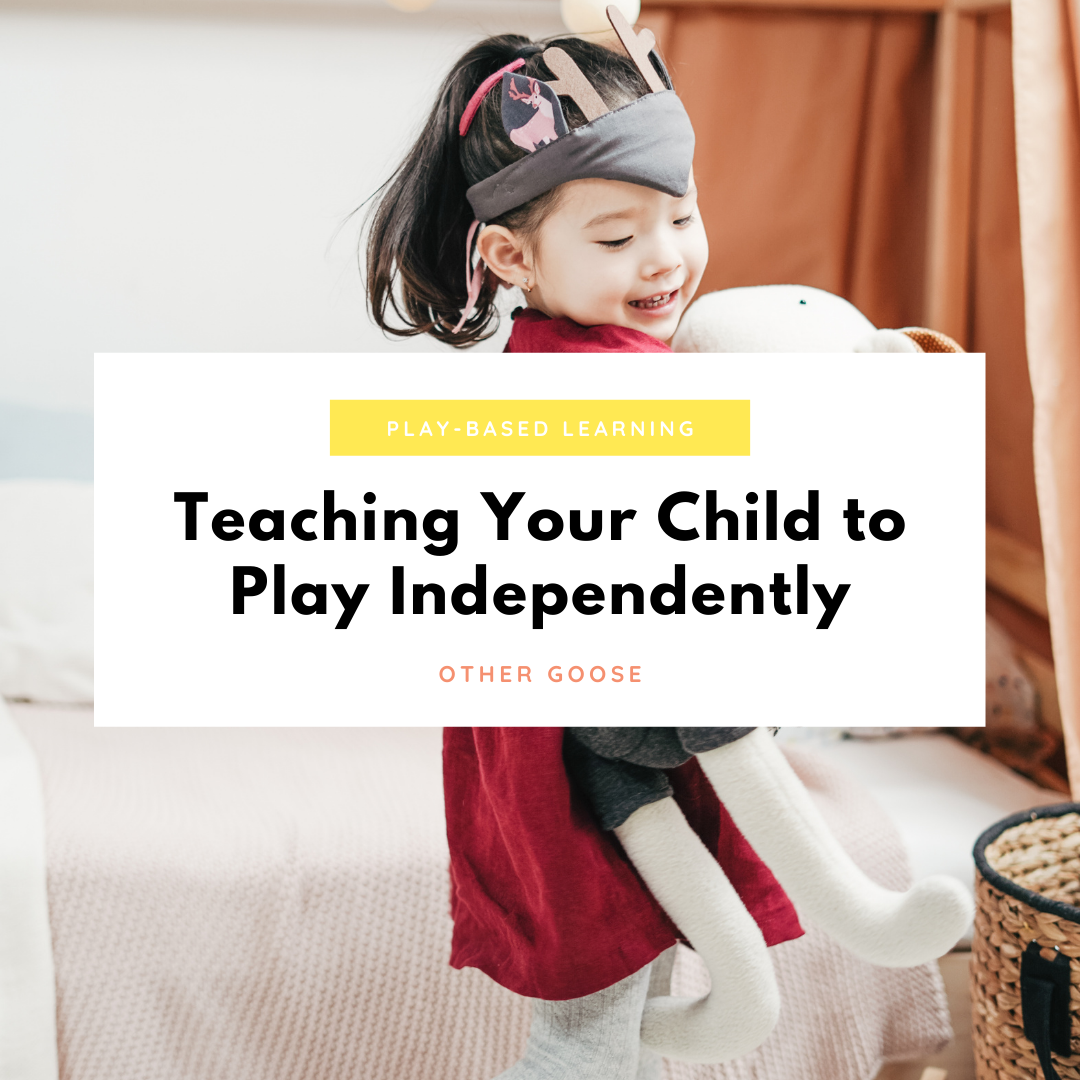
In today’s post, it’s time to get real about the “Invitation to Play” you might have seen your favorite Insta parenting influencers touting. In case you’re not yet familiar, an Invitation to Play is often presented as an (increasingly complex) activity a parent sets up for a child in order to foster play. Think: color-coordinated sensory tubs, a giant bubble-wand making kit, perhaps even a menagerie of themed puppets awaiting a show.
It makes sense – every parent wants to introduce new play experiences and exciting ideas for their families. But at the same time, there’s a hesitancy here. We don’t want to run the risk of our kids relying on us to be their cruise directors. Isn’t there enough to do already? Surely it’s not sustainable for a parent to “manage” their child’s play sessions, right?
So how do we balance the two ideals? How do we give our kids enough boredom to create their own play while also giving them enough novelty to spark new ideas?
The Rule of Three “News”
To find the necessary balance, it’s first important to ask ourselves why the typical invitation to play works. It works, simply, because it’s unexpected. It’s a surprise, it’s novel, it’s new. But guess what? That doesn’t mean it also has to be complicated! You don’t have to set up a 13-ingredient kitchen science experiment or a basket full of handicrafts for play to make a massive impact. In fact, we rely heavily on The Rule of Three News to make inviting play as simple as possible. (1) New thing, (2) New place, or (3) New way.
Here’s an example of each:
- New Thing: The next time you’re at the library, try sneaking a few extra children’s books into your library tote, and once you’re home, stash them in a closet to hide. Every now and then, once your kids are bored of the books they picked out, leave one of your extras on their pillow as a surprise to flip through. That’s an invitation to play!
- New Place: Try moving a favorite item – a play kitchen, a basket of blocks, a bin of dress-up clothes – to a different side of the room, or a different room in the house. Or, take an indoor toy outside to play with on the driveway or deck. That’s an invitation to play!
- New Way: Take a familiar material and put it to use in a new way, like using sidewalk chalk to color sticks, or dry erase markers to doodle face reflections on a mirror. (Other Goose members: you’ll recognize our upside-down art lesson as a perfect example of this – drawing pictures upside down introduces just the right amount of newness to make it engaging!) That’s an invitation to play!
The best part? These ideas don’t require ANY purchase, and they don’t need to involve any prep or mental work on your part. Go ahead; take a quick look around the room and search for anything your kids haven’t enjoyed in awhile. Then, decide if you can invite play by pairing it with a new thing, new place, or new way. Boom – instant surprise, and instant novelty!
The #1 Boredom Phrase
Remember: as beautiful and tempting as constant novelty can be, kids need boredom, too! Our children need to complete the full creative cycle independently: from boredom to idea to creation to completion. And sometimes they need our help to get there!
Here’s where The Boredom Phrase comes in handy: “Solution first.” In short: “Solution first” means that your kids are encouraged to approach you with a potential solution, not just the problem. So, rather than coming to you with the words “I’m bored!,” they can come to you and say “I’m bored – I think it might help if I could take the mattress off my bed so I can use it to slide down the basement stairs.”
Why is this so important? Because the responsibility of the initial idea must be on their shoulders, not yours. A play scenario has far longer staying power if a child has taken ownership over their own play. Think about it: how much more fun is it when you get to choose what you’d like to do, rather than simply going along with someone else’s suggestions or ideas? (Related: Watch 3 Choices to Give Your Child Today)
Bonus: Even if your kids’ solution isn’t a viable one, you can use it as a jumping off point to brainstorm alternatives together. Maybe their play idea isn’t realistic for the day ahead, and if so, you can coach your littles through an option that works for everyone. In mere minutes, they’re getting a crash course in negotiation, compromise, and problem-solving!
A New Habit of Self-Education
This process takes practice, but every time we encourage our kids to seek their own solutions and be “in charge of their own fun,” we’re strengthening their independence and helping them establish a new habit of self-education. Slowly but surely, by simplifying our own role in play and by guiding them toward creative solutions, they’ll learn to be their own cruise director – and we can simply show up, support, and applaud.
p.s. Has your child officially hit the boredom wall? Try the “Display, don’t say” technique! Here’s how it works.
